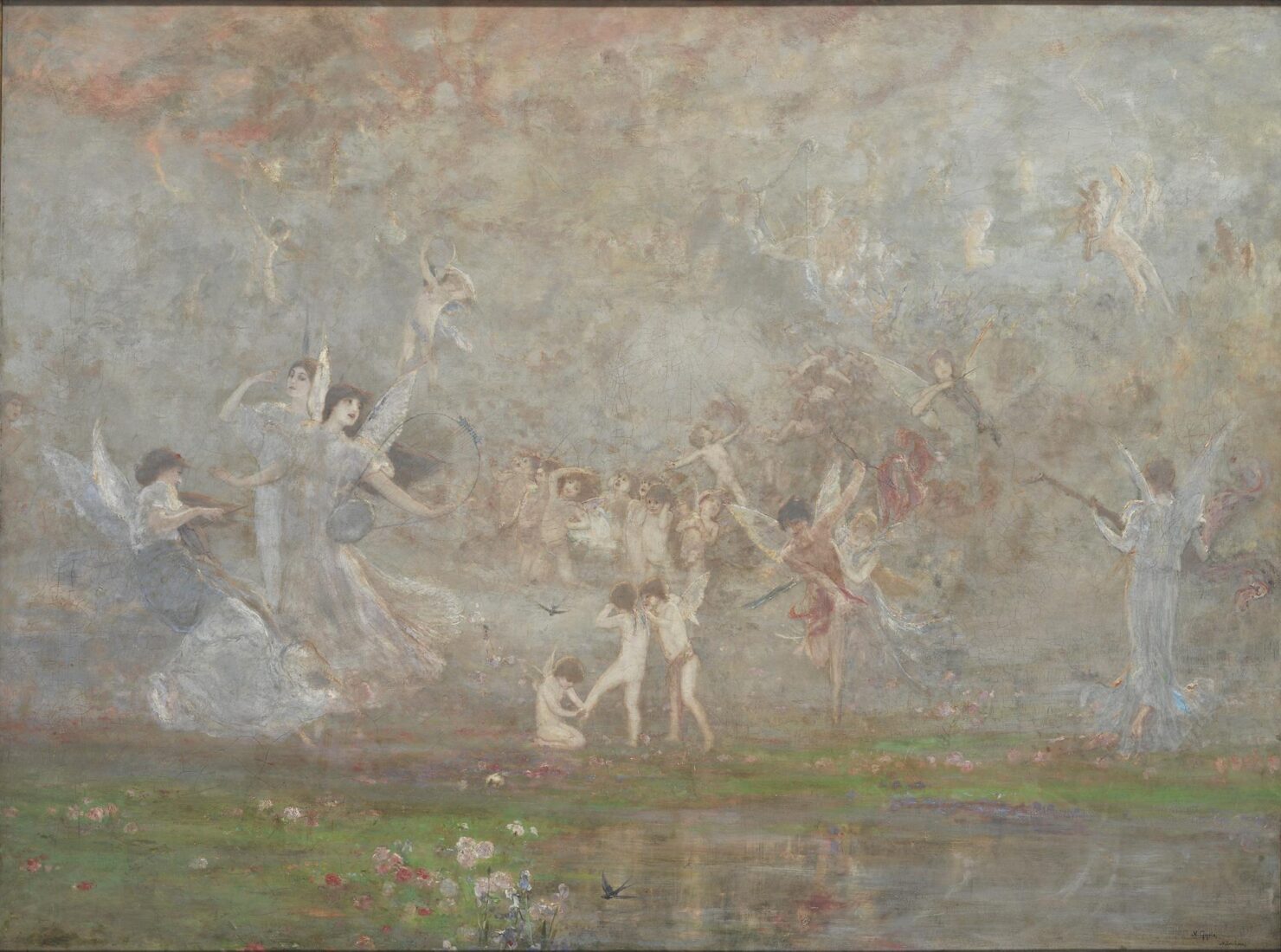



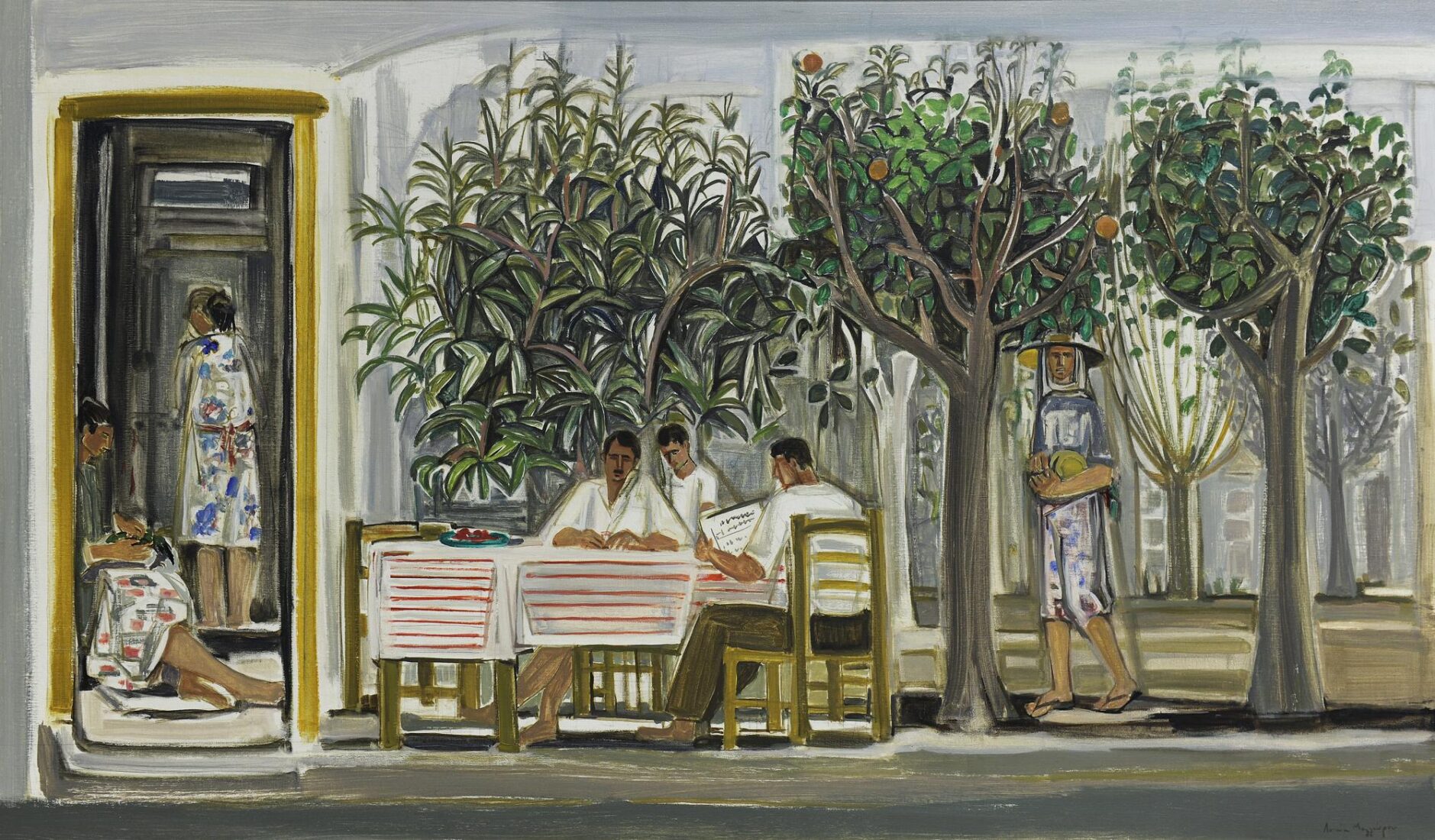
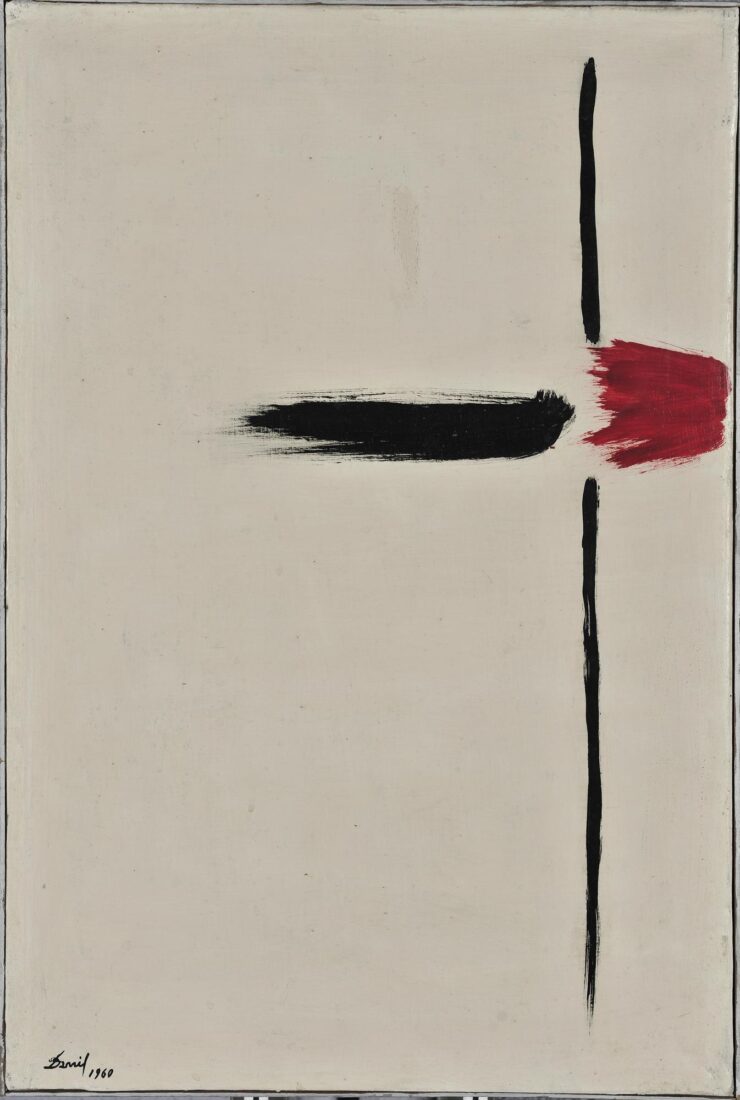





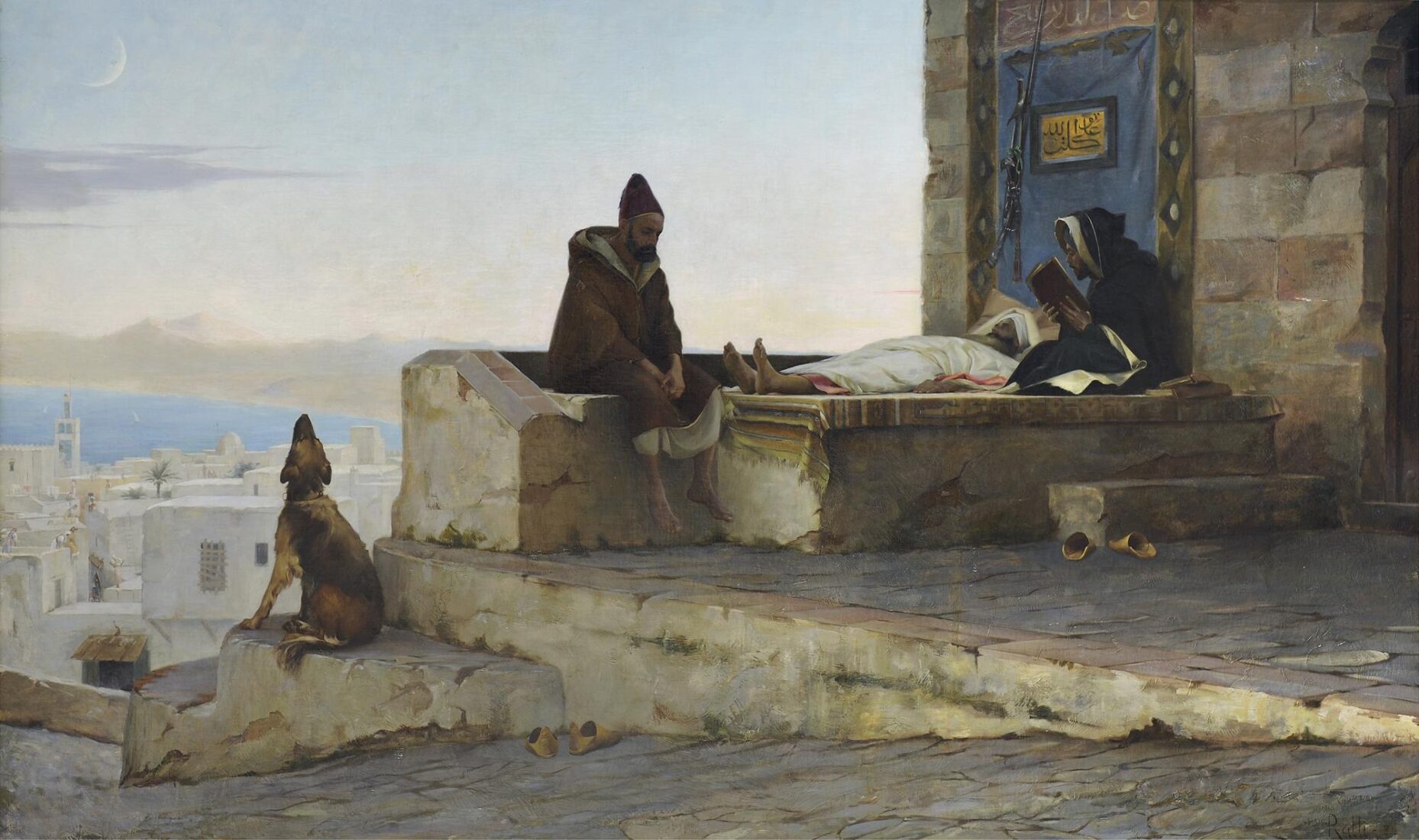

Architect Lysandros Kaftantzoglou was the very successful director of the School of Arts from 1844 to 1862. Moreover, he was the one who designed and built the Technical University. Nikephoros Lytras painted his portrait from a photograph, shortly after the architect’s death.
Serious and contemplative, the great architect is sitting slightly turned to the side in a luxurious easy chair, over which he has thrown his greatcoat with a certain nonchalance. He is facing the viewer but is in fact gazing towards infinity. The artist perhaps intended to suggest in this manner the scholar’s recent death. Nikephoros Lytras here proves himself a penetrating psychologist, true to his own saying that, “the portraitist must draw from his sitters what they feel in the depths of their souls.” The architect is holding a small book, his index finger marking the page on which reading was interrupted. His right hand rests on a table, on which are scattered bits of paper and other items, splendidly captured.
The painting is made in broad, assured brush strokes, with a gentle palette of brown-red, along with grey-green, ochre, black and some white. Note the red scarf in the pocket of the greatcoat on the chair. With its monumental size, this painting is one of the most imposing portraits in the 19th century.

As this painting and the “Areios Pagos” by Lembesis were produced during the same year, 1880, and their makers were friends, they may well have been made at the same time, as was the habit of Impressionist painters. It is interesting to compare the two paintings in order to find out how two painters coming from two different schools – Lembesis from Munich and Pantazis from Brussels – approached the historical rock of the Areios Pagos on a summer day. Let us first see the elements they have in common: the two paintings share the same dominant colour tonality, based on the interplay of gold-yellow ochre on the rock and grey-blue in the sky. In both paintings, shades are purple. Therefore, both painters are familiar with the Impressionist “recipe.” So, where is the difference to be found? In “writing,” in brushwork, and in rendering volume. Lembesis’ writing is meticulous; he draws and captures every detail in the subject. The rock, on the other hand, maintains all of its compactness, it is solid. On the other hand, let us see how Pantazis, who is more of a true impressionist, approached his subjects. His technique is utterly different. Here, free brushwork can be seen at work, “building” the form. The rock is not trapped within a closed outline; rather, it is an open form. Also note the sky and the clouds, rendered in the most agile brushwork. In the dry Attic light, of course, forms maintain their shape, they are easy to draw clearly. One is therefore at a loss as to which painting is the most faithful interpretation of reality.




This monumental circular composition by Konstantinos Parthenis depicting the over-life-size head of Christ rivets the eye of the visitor to the National Gallery. Christ, here a mature bearded man wearing the crown of thorns, turns his tearful, agonized gaze heavenward. A torrent of yellow-gold light replaces the halo and bathes the divine face, bestowing on it an otherworldly glow and emphasizing its modeling.
The humanized dogma and the dramatic rendering of the Passion belong to the iconography of the Catholic Church as it was formulated in the time of the Counter-Reformation and dominated the Baroque (17th century). Parthenis’ Christ belongs to a typology frequently encountered in El Greco, but this specific composition appears to be inspired by a similar circular composition by Guido Reni. The subject, the emotional charge, the dominant blue palette, and the pointillist technique classify this mature work by Parthenis within the Symbolism of the Vienna Secession, where he did his apprenticeship as a young painter.
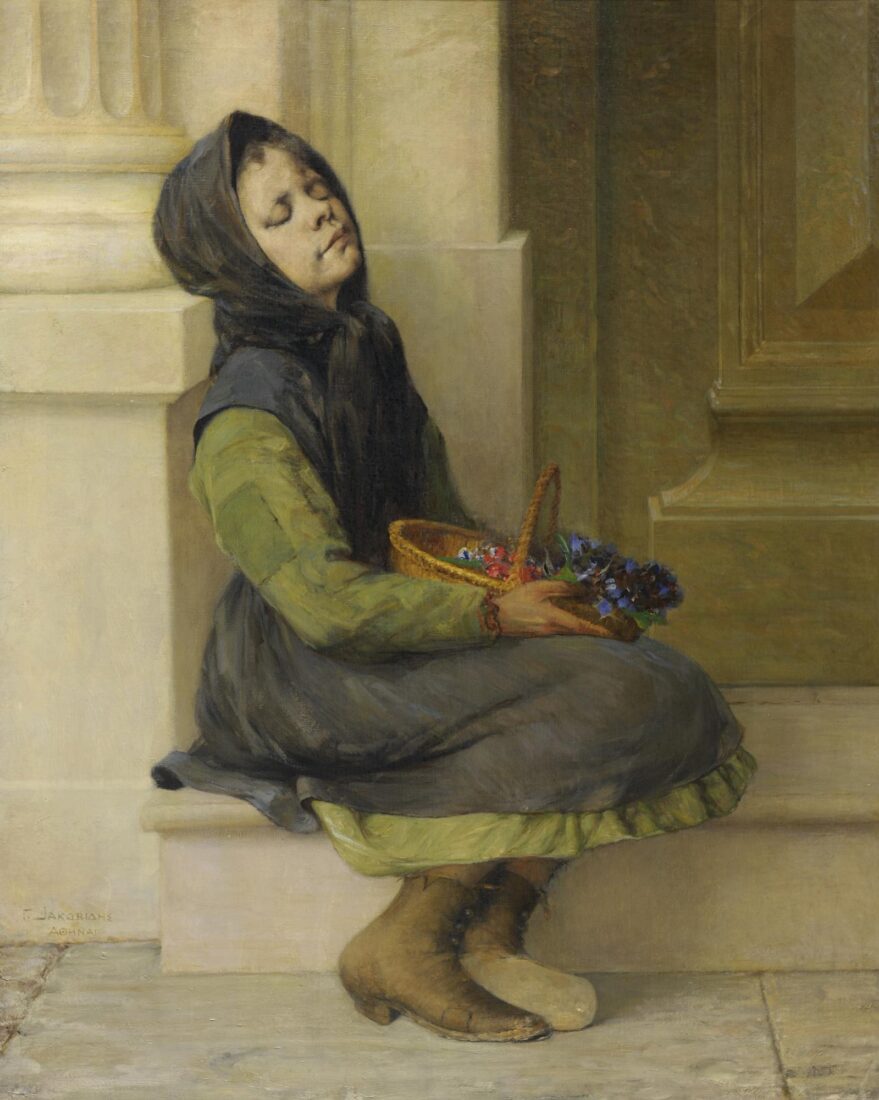


“The First Steps” is one of Iakovidis’ best-known and loved works. The scene is set in a Bavarian village home interior, bathed in the light pouring through the open window. Dressed in dark cherry tones, the grandmother is holding the blond baby, full of courage and smiling, taking its first steps in the world, on top of a wooden table. The grandmother has left her red knitwear in a corner. Note this dash of red colour in Iakovidis’ works; we have also seen it in his teacher, Nikephoros Lytras’ paintings. The baby’s elder sister, seated with her back towards the foreground, is waiting to receive the baby with her arms open in a protective gesture. Note also the effect of the light on figures: All white and blond, the baby is dazzling. It thus becomes the symbol of emerging new life. The incoming light, on the contrary, illuminates the girl’s outline, lining it with a bright aura. The work exudes life and elan vital.
First shown at the Glaspalast exhibition in Munich in 1892, this painting marks a key change in Iakovidis’ work regarding his interpretation of light. The natural light floods the scene as it comes through the window, adding vibrancy and ambiance.

The “Children’s Concert” is one of Jakovides’ boldest works with respect to technique and lighting. The merry scene is set in the bright interior of a Bavarian village home, lit up by two windows, one on the left and one in the centre. These windows doubly illuminate the scene, and the light entering in two opposite directions poses a problem, which the artist resolves masterfully as we shall see. But let us first meet the characters: the four young musicians. The first one, seated, is playing the drum, the second is straining in order to blow into the trumpet, the third one, half-hidden, is probably playing the harmonica, and the fourth one, standing further on the side, in lack of a proper instrument, is blowing hard into a bright red watering bucket. All the children are barefoot. Which is the audience of this children’s concert? The mother, seated on the left, close to the window, but mainly the little sister, her arms extended towards the musicians. Another older sister is seated in front of the main window, full of flowers. The painter is “watching” the scene from above, which is why the floor boards have been drawn in perspective.
The protagonists in this musical, vibrant feast, are light and colour. The entire scene is bathed in orange hues, which become even bolder as the painter places their complementary colour, blue, adjacent to them. The light comes from two opposite directions, making the volumes of the children dark and heavy, whereas the outlines are intensely illuminated. Thus, the first boy’s shirt becomes almost transparent. The face of the elder girl has “melted” into the light. Here, Iakovidis pushes his art to the extreme, in other words, Impressionism.
This work has been painted in two versions. The earlier one was first shown in 1896, during the first Olympic Games in Athens. Its colours were on the cool, grey side, as Emmanouil Roidis remarked. Iakovidis repeated the painting in order to send it to the 1900 Paris World Fair, where it earned a prize. This brighter version is the one we are now able to enjoy at the National Gallery.
